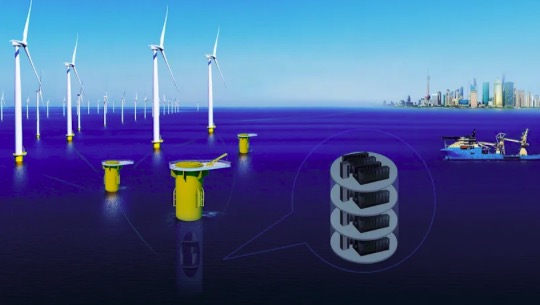Subscribe
Subscribe Now to receive Goldsea updates!
- Subscribe for updates on Goldsea: Asian American Supersite


The explosion of giant data centers needed to host fast-growing AI applications is creating a virtually insatiable demand for electrical power. About 30 to 40% of that energy goes to keeping the servers from overheating.
China data-center operator Hailanyun aka HiCloud hopes to address the energy problem by using the ocean to cool its data centers, reports Scientific American. This month Hailanyun, or HiCloud as it sometimes calls itself, began construction on an underwater data center about six miles off the coast of Shanghai, a top Chinese AI hub.
When completed in September the center will house up to 792 AI-capable servers on 198 server racks. That's sufficient processing capacity to train in a single day GPT-3.5, the large language model (LLM) released by OpenAI in 2022. The scale of this proof-of-concept (POC) project is modest compared with typical land-based server farm which house between 3,000 and 10,000 server racks.
The Hailanyun project contemplates other advantages from the farm's ocean location. Rather than circulating hundreds of thousands of gallons of fresh water for cooling, it will pump seawater across the backs of the server racks. To keep operations even greener, the server farm will draw 97% of its power directly from a offshore wind-energy farm. And filling the watertight server-farm housing with nitrogen reduces the corrosive effects of oxygen in the air on server components, greatly extending their useful life.
The cost of the Shanghai project is $223 million. In future Hailanyun hopes to continue developing more full-scale undersea server farms at full scale with enthusiastic support from China's government. It's not alone. Similar projects are contemplated in South Korea. Servers that float on the ocean are under consideration in Japan and Singapore.
The concept behind these underwater-based facilities was pioneered by Microsoft in 2022 with its Project Niatick off the coast of Scotland. A couple of potential issues that might have discouraged Microsoft from pursuing the design further are environmental and security. The heat generated by the servers produce a slight warming effect in adjacent waters, ranging around a fraction of a degree. The security concern stems from a finding that underwater server farms would be vulnerable to damage from underwater acoustic attacks.

This artists conception of the undersea data center and wind-energy farm is provided by Hailanyun.